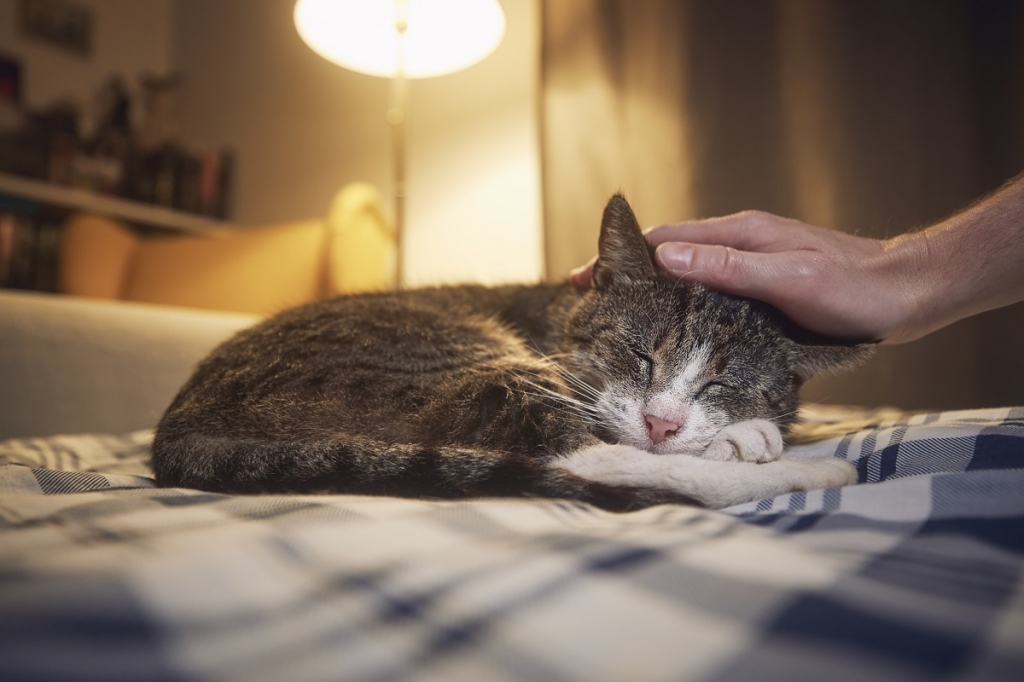
The research could help vets in practice predict the cats that are most at risk of biliary obstruction
Research Identifies New Cut-off For Emergency Action For Cats With High Serum Bilirubin Concentration
New research from three CVS veterinary referral hospitals has identified a key factor that can help vets in practice predict the cats that are most at risk of biliary obstruction and therefore in need of emergency action.
Total serum bilirubin concentration is a useful biochemical variable often reported on a blood test panel as part of a thorough clinical assessment, and can provide information on several physiological functions and disease processes.
Cats with hyperbilirubinaemia (high serum bilirubin concentration) often are presented with clinical icterus (jaundice) that may be identified on clinical examination. However there are many underlying causes for hyperbilirubinaemia being identified on a cat’s blood test, some of which are more immediately critical than others.
The new study has demonstrated that the level of hyperbilirubinaemia is important, and crucially, that cats with a bilirubin concentration ≥66μmol/L are more likely to have biliary obstruction, which may require emergency surgery, than those with a mildly raised bilirubin concentration.
Previous cut-offs have been reported, but were based on expert opinion and were previously higher than that identified in this new study, which could have resulted in some emergency cases being missed or investigations delayed. Therefore the study recommends that cats with bilirubin over this newly identified cut-off would be those most warranting further diagnostic imaging investigations, specifically to rule out biliary duct obstruction.
The study also identified older age to increase the likelihood of biliary obstruction, based on the cats studied, so this is useful to assess alongside bilirubin concentration.
The Diagnostic and predictive ability of hyperbilirubinemia severity in cats: A multicenter retrospective study was undertaken by Lumbry Park Veterinary Specialists, Bristol Veterinary Specialists (former Highcroft Referrals) and Chestergates Veterinary Specialists, in collaboration with University of Surrey School of Veterinary Medicine. Data was collected from 216 cats.
Xavier Salord Torres, lead author and Resident in Internal Medicine at Lumbry Park Veterinary Specialists, said: “It is not uncommon to be presented with a cat with raised total serum bilirubin concentration in first opinion practice. But deciding on the importance and relevance of that can be difficult, even after thorough diagnostic investigations. Availability and experience with hepatobiliary surgery, and examination of biliary ducts via abdominal ultrasonography may not be widely assessable in primary practice. Therefore this evidence-based cut-off could be a very useful guide to determine when specialist referral, or advanced diagnostic investigations are required.”
CVS Group operates across small animal, farm animal, equine, laboratories and crematoria, with over 500 veterinary practices and referral centres in the UK, the Republic of Ireland and the Netherlands. In the last five years the company has invested nearly £80 million in its sites, facilities and equipment, in addition to industry leading training and support, to give the best possible care to animals. For further information on CVS visit www.cvsukltd.co.uk .
More from CVS UK Ltd
- Precise imaging and unconventional fixation resolve challenging tarsal fracture
- CVS Farm Vets launches innovative Sheep Lameness Project to support UK farmers
- New 'CVS Vets' brand is launched at Broadleaf
- New study reveals key prognostic indicators in canine mast cell tumours
- Ernie’s ball trouble: Managing a challenging oesophageal foreign body

 2 years ago
2 years ago  1366 views
1366 views
